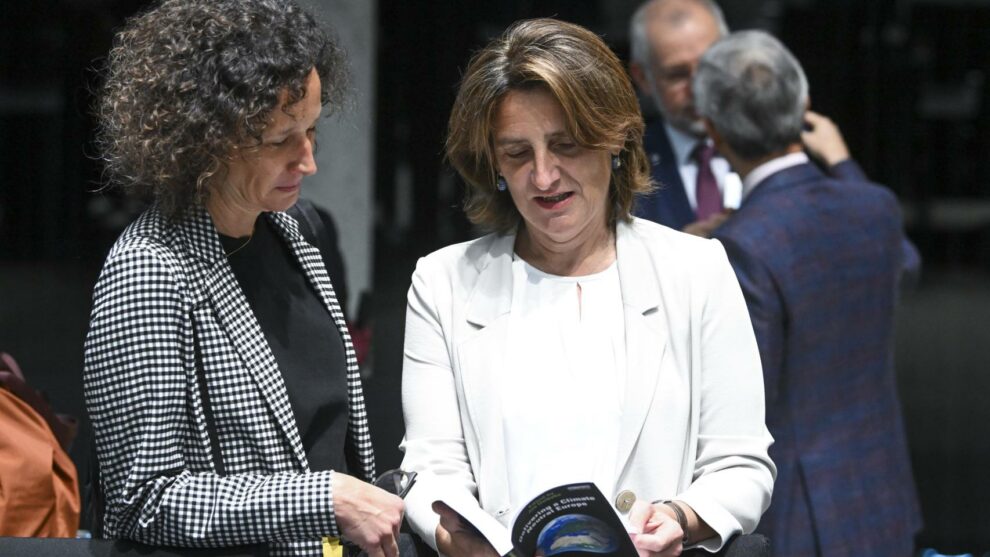When it seemed that the controversial Nature Restoration Law was going to end up definitively in the trash, an unforeseen script twist at the last minute allowed it to be saved, although in a very precarious way. This is one of the most controversial regulations of the last legislature and a symbol of the confrontation between defenders of the European Green Deal and those of agricultural sector.
In stoppage time, the Environment Ministers of the European Union gave their final approval to the Law – whose objective is recover lost biodiversity and degraded natural spaces thanks to Austria’s change of position, which has gone from abstention to yes. However, the chancellor Karl Nehammer has written a letter to the Belgian presidency in which he maintains that his Climate Minister, Leonore Gewessler, was not authorized to vote ‘yes’ because there is no consensus in the coalition. Gewessler, who is Green, would have ignored her instructions, something she denies.
Italy, Poland, the Netherlands, Hungary, Sweden and Finland voted against, while Belgium abstained. His main argument is that the law will have very high costs and impose disproportionate bureaucratic burdens, especially for farmers. “We cannot accept an increase in economic and administrative burdens on the agricultural sector. We cannot ignore their suffering and their very difficult situation,” argued the Italian deputy minister, Vannia Gava.
[El PPE fracasa en su propósito de tumbar la Ley de Restauración de la Naturaleza]
“If we do not restore nature, there will be no future for local communities or for agriculture,” replies the third vice president and person in charge of Ecological Transition, Teresa Riberaone of the greatest defenders of the Law.
Ribera has said that the approval of the Law is “good news”, although he admits that its implementation will require “an accompanying effort and a commitment to the primary sector.” “In Spain we have good examples of this commitment, specifically in the restoration of the Mar Menor or in the opportunity that has been given to Doñana“says the vice president.
The standard, promoted by the Commission of Ursula von der Leyendemands put measures in place to restore at least 20% of the EU’s terrestrial and marine areas by 2030, and all ecosystems that need restoration between now and 2050. However, during its processing in the European Parliament and the Council (which have already agreed on the final text) it has been considerably lowered the ambition of the original Brussels proposal.
In factat the request of the European Parliament, a “emergency break” which will allow the suspension of the provisions of the Nature Restoration Law that refer to the agricultural ecosystemsin the case of exceptional circumstances that put food security at EU level at risk.
The processing of the norm has been particularly eventful. The plenary session of the European Parliament approved the Nature Restoration Law on February 27 by 329 votes in favor, 275 against and 24 abstentions. And that despite the fact that European People’s Party (EPP), the largest in the European Chamber, had agreed to vote against precisely with the argument that it will introduce more bureaucratic burden and obligations for farmers, right in the middle of the countryside revolt throughout the EU.
In the end, around twenty EPP MEPs (from Slovakia, Malta, Ireland, Portugal, Germany and the Netherlands) rebelled against the political line set by their leader, the German Manfred Weber, and supported the norm. The majority of the popular (including the Spanish delegation) voted ‘no’, as did the radical right groups European Conservatives and Reformists and Identity and Democracy. The Law went ahead with the support of European socialiststhe greens, the radical left and the majority of liberals.
This vote was taken on the basis of a text that had already been agreed by the negotiators of the European Parliament and the Spanish presidency of the EU on behalf of the governments. However, when it seemed that the Law was definitely on track, Last March Hungary withdrew from the agreementjoining the countries that had been against it from the beginning and forming a blocking minority.
It was one of the few cases in history where a European standard was questioned after having been approved by the plenary session of the European Chamber. Normally, governments speak out before the vote in Parliament and do not change their position: final ratification is just a bureaucratic procedure. But Hungary defied this convention and withdrew support for the Nature Restoration Law at the last minute.
However, the Belgian presidency of the EU has continued negotiating to move forward in any way possible. the last rule of the last legislature. In the end, his efforts have been successful thanks to Austria’s change of position. Despite the chancellor’s letter, the Council’s legal service has confirmed that Minister Gewessler represents her country and that her vote is binding.
To achieve the general objectives of the Law, Member States must restore at least 30% of the habitats covered (from forests, grasslands and wetlands to rivers, lakes and coral beds) from poor to good status by 2030 , a percentage that will increase to 60% in 2040 and 90% in 2050. Until 2030, priority should be given to the protected areas of the Natura 2000 network.
Where an area is in good condition, EU countries will ensure that it does not deteriorate significantly. Member States will also have to adopt national restoration plans that detail how they intend to achieve these objectives.
With a view to improving the biodiversity of agricultural ecosystems, EU countries will need to make progress in two of the following three indicators: grassland butterfly index; the proportion of agricultural land with very diverse landscape characteristics, and organic carbon stocks in mineral soils of croplands. Furthermore, measures should be taken to increase the index of common birds linked to agricultural environmentssince these animals are good indicators of the general state of biodiversity.













Add Comment